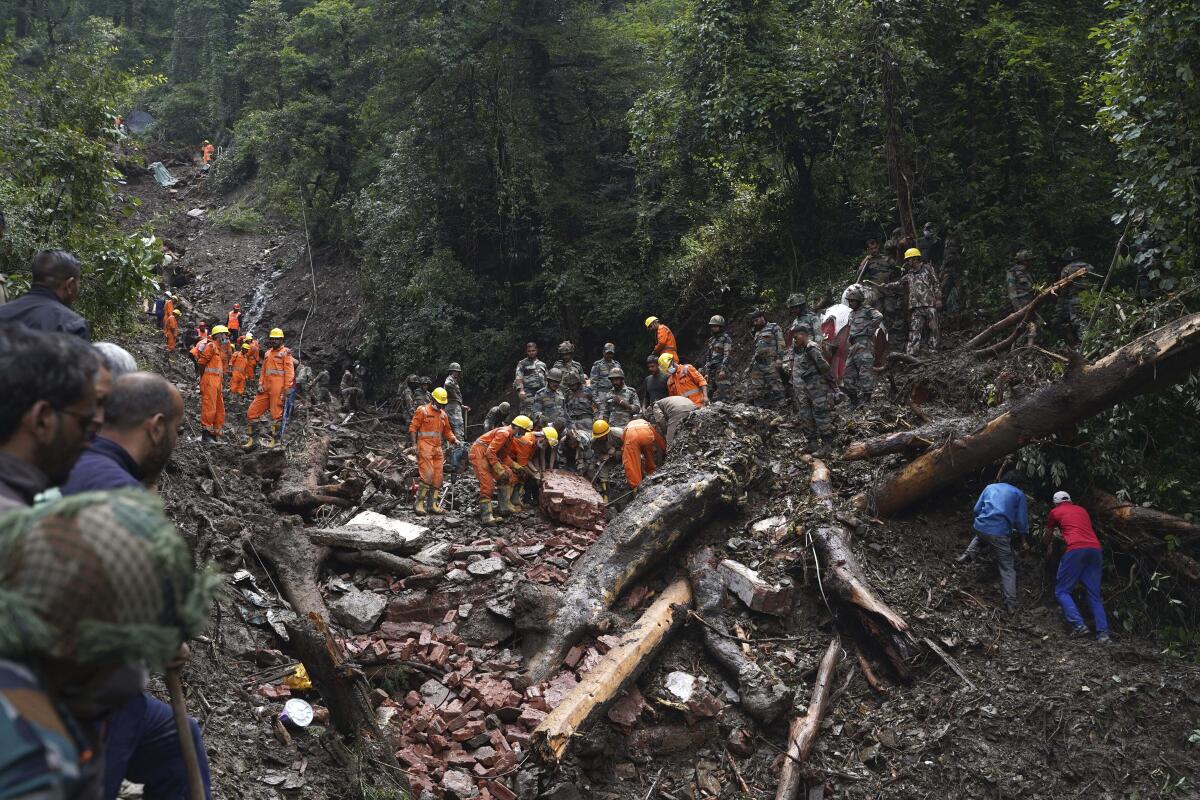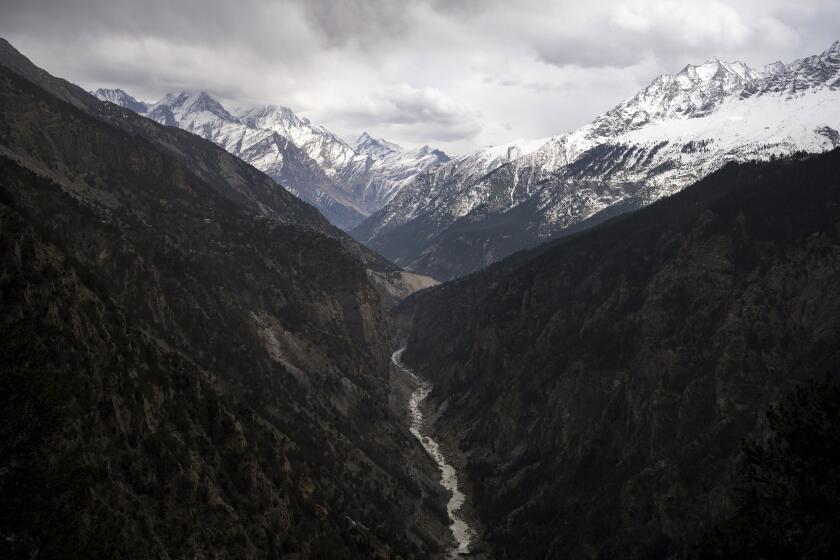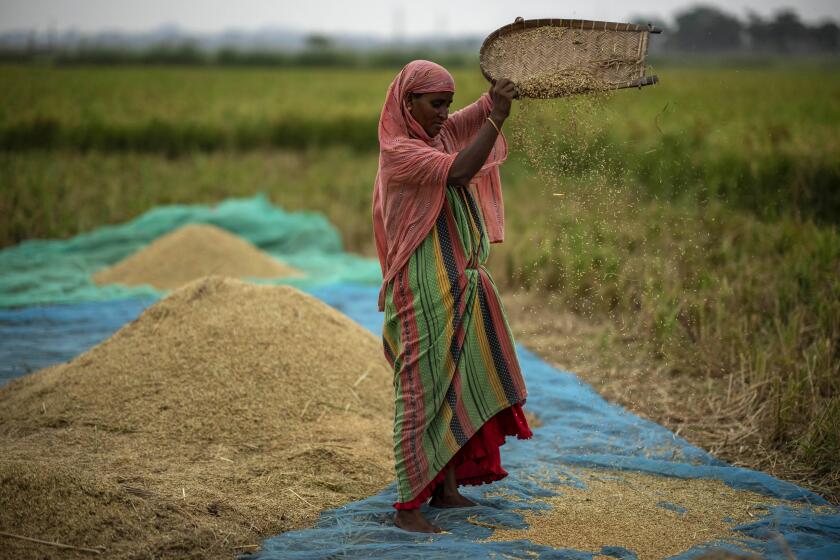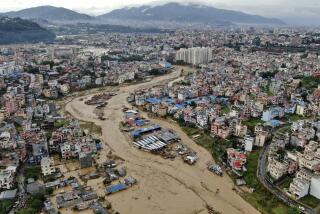Heavy rain and landslides kill scores of people in Indian Himalayas

- Share via
NEW DELHI — Days of relentless rain in India’s Himalayan region have killed at least 72 people this week, a government official said Thursday, as a heavy monsoon triggered landslides and flash floods that have submerged roads, washed away buildings and left residents scrambling for safety.
Rescuers in mountainous Himachal Pradesh state have been working through challenging weather conditions to save people trapped under mud and debris from the rains that struck over the weekend. India’s weather department has put the state on high alert and expects the downpours to continue over the next few days.
Vikram Singh, an operator at the state’s emergency operation center, said Thursday that the 72 deaths occurred over the previous five days and that rescue work was ongoing.
Hundreds of roads remain blocked, and schools in the state capital, Shimla, have been ordered shut as the Indian air force and disaster-response teams help evacuate people from low-lying, vulnerable areas. The state’s chief minister, Sukhvinder Singh Sukhu, said more than 2,000 people have been rescued using helicopters and motorboats and are now safe in relief camps.
Visuals on social media showed trees falling apart as homes, built atop the hills, collapsed in succession. In the background, people can be heard crying out in horror as they shout: “Get out from here!” and “Get back!”
In Shimla, a Hindu temple collapsed Monday amid landslides, and authorities feared that people were still buried under the debris. Authorities said the temple had been crowded with devotees, raising fears of a high death toll.
Melting glaciers in the Hindu Kush Himalayan mountain range could lose most of their volume this century if greenhouse gas emissions aren’t slashed, a report says.
Homes in some districts were also washed away after a cloudburst Sunday night, leaving roads flooded and people stranded.
Cloudbursts — a sudden, very heavy rain — are a common occurrence in Himalayan regions, where they have the potential to cause intense flooding and landslides affecting thousands of people.
Sukhu, the chief minister, told the Press Trust of India news agency that it will take a year to rebuild infrastructure destroyed by the rains of this monsoon, and claimed the estimated loss to be about $1.2 billion. “It’s a big challenge, a mountain-like challenge,” he said.
Last month, record monsoon showers killed more than 100 people over two weeks in parts of northern India, including in Himachal Pradesh, which was the worst hit.
The FAO Food Price Index increased 1.3% in July over June, driven by higher costs for rice and vegetable oil.
Disasters caused by landslides and floods are common in India’s Himalayan north during the June-September monsoon season. Scientists say they are becoming more frequent as global heating increases.
However, local experts say the current disaster is likely caused by unplanned construction in this vulnerable region. “It is poor planning and governance that has led to this much damage,” said Anand Sharma, a retired meteorologist with the Indian Meteorological Department, the country’s weather agency.
“All the fallen buildings are those that were constructed recently. Buildings built a 100 years ago have witnessed little to no damage,” he said.
“They build anywhere they like, and when heavy rains occur, such disasters inevitably follow,” Sharma said.
More to Read
Sign up for Essential California
The most important California stories and recommendations in your inbox every morning.
You may occasionally receive promotional content from the Los Angeles Times.











